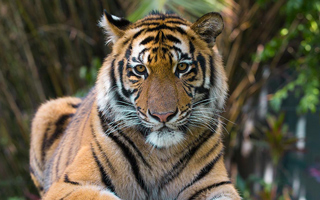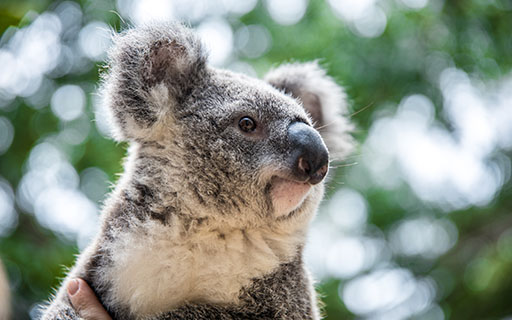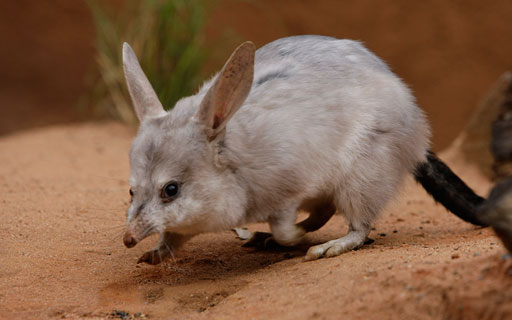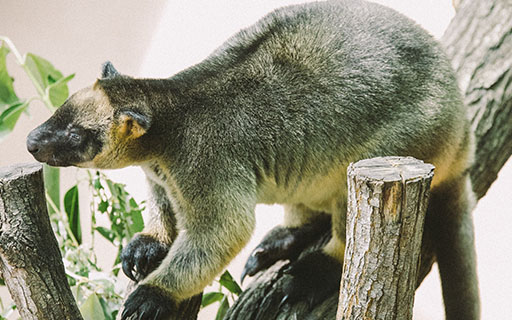BILBIES
Macrotis lagotis
| Size: |
|
||||||||||||||||||
| Weight: |
|
||||||||||||||||||
| Status: | Endangered in QLD, vulnerable in W.A and N.T | ||||||||||||||||||
| Description: | Bilbies are about the same size as a rabbit, have long rabbit like ears and their snout is long and narrow. Their tail, which is about 2/3 the length of their head and body, is covered with black hair on the first half with the remainder being white. The tail also has a distinct crest on the upper surface of unknown purpose. Their soft and silky fur is mostly ash grey; legs and under parts are white, and parts of their feet, nose and ears are pale pink. |
||||||||||||||||||
| Habitat: | Bilbies may construct many burrows within their home range, these burrows spiral downwards to a depth of about 2 metres and lack nesting material. Their preferred habitat is in the grassland and wattle shrublands of arid and semi-arid areas. |
||||||||||||||||||
| Life Cycle: |
Breeding behaviour when a female comes into oestrous includes scent marking, vocalisation and investigation of the face, shoulders, flank and cloaca. Breeding may occur at any time of the year but usually between February and April. Bilbies can also breed up to 4 times a year when conditions are favourable. After one of the shortest gestation periods of most marsupials, 14 days, 1 – 3 young are born, which then attach themselves to one of 8 teats in the mothers backward facing pouch. The young leave the teat between 78 and 82 days, and leave the pouch permanently at about 3 months. Young are placed in the burrow for about 2 weeks, with the female returning at regular intervals at night to suckle them. Females reach sexual maturity between 5 and a half and 7 months and will breed for the next 4 years while males mature between 9 and 14 months. |
||||||||||||||||||
| Diet: | This nocturnal marsupial feeds mostly on plant seeds, fruits and bulbs, fungi, insects and lizards, occasionally eating some small mammals. They are primarily insectivorous but are also omnivorous. They also consume soil and 20-90% of their excrement is made up of soil. They usually do not drink water as they get most of the moisture required from their food. Their long slender snout and well-developed sense of smell can detect food up to 10cm below the ground and their long slender tongue is used for extracting food. While eating they store the food in their cheeks until they have a mouthful and then they swallow it. |
||||||||||||||||||
| Facts: | The bilby belongs to the bandicoot family and is often referred to as the rabbit-eared bandicoot. Bilbies were once common in about 70% of mainland Australia and since European settlement they have nearly disappeared from nearly all of its former range. At present the Queensland bilby population is estimated at between 600 and 700 animals, and is scattered across nearly 100,000 km2 between Birdsville and Boulia in Queensland’s far southwest. At Easter 2001, a 25 square kilometer predator and feral animal proof fence was officially opened in Currawinya National Park in southwest Queensland. Bilbies bred in captivity at Charleville in southwest Queensland were released into the enclosure late 2001. Their numbers have declined since the beginning of the 1900’s due to competition for food with rabbits and livestock, predation from feral cats, foxes and dingoes. Changes in fire regimes have also assisted in their decline, as small bushfires promote different stages of regrowth this is essential for their survival. Drought and diseases have also aided in their decline. Females will often share a burrow with other females and occasionally small family groups but there is a strict hierarchy among males. They will usually emerge from the burrow 1 hour after dusk and retreat back to burrow 1 hour before dawn and is most active after midnight. |
||||||||||||||||||
DWF SPECIES




